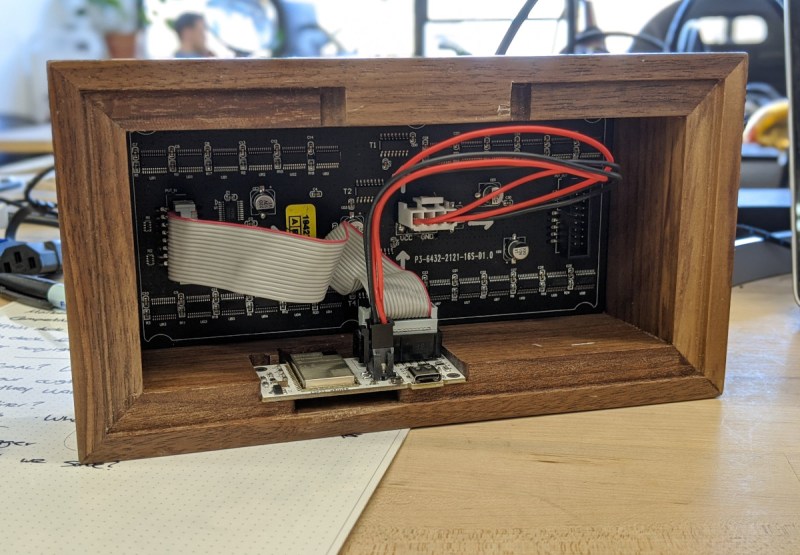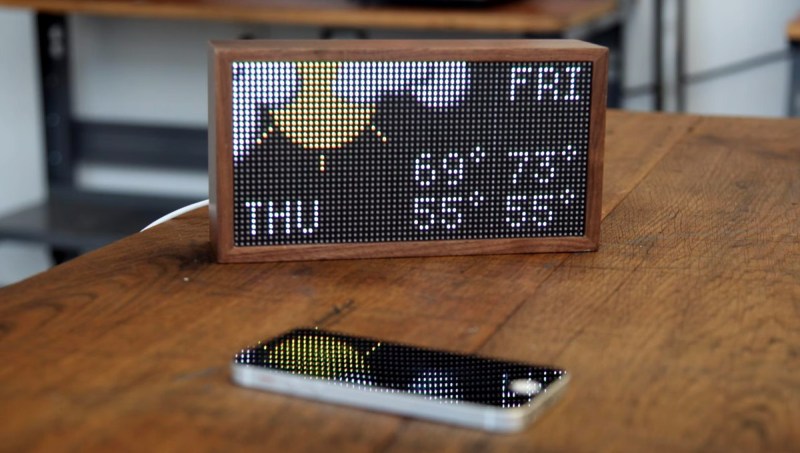We recently got a note in the tips line from [Tavis Gustafson], who is one of the developers of Tronbyt — a replacement firmware and self-hosted backend that breaks the Tidbyt smart display free from its cloud dependency. When they started the project, [Tavis] says the intent was simply to let privacy-minded users keep their data within the local network, which was itself a goal worthy enough to be featured on these pages.
But now that Tidbyt has been acquired by Modal and has announced they’ll no longer be producing new units, things have shifted slightly. While the press release says that the Tidbyt backend is going to stay up and running for existing customers, the writing is clearly on the wall. It’s now possible that the Tronbyt project will be able to keep these devices from ending up in landfills when the cloud service is inevitably switched off, especially if they can get the word out to existing users before then.
What’s that? You say you haven’t heard of Tidbyt? Well, truth be told, neither had we. So we did some digging, and this is where things get really interesting.

It turns out, Tidbyt started its life as a project on Hackaday.io by [Rohan Singh] back in 2020. The hardware consists of a 64×32 HUB75 LED panel and a small custom PCB holding an ESP32 inside of a wooden box, and while it doesn’t appear to have ever been an open source device per se, how it worked internally was hardly a secret. The software side of things however was released on GitHub, which likely made creating the custom firmware that much easier for [Travis] and co.
By March of 2021, Tidbyt was on Kickstarter, where it blew past its goal in 48 hours and ultimately brought in just shy of one million dollars. In October of 2023, they were back on Kickstarter with a second generation of Tidbyt hardware, and this time brought in even more money than the first time.
So what’s the takeaway from all of this? Well, first of all we can’t believe this whole thing was developed right under our noses without us even realizing it. This seems like a good time as any to remind folks to drop us a line if you’re working on something cool and you want to share it with the class. We would’ve loved to connect with [Rohan] as Tidbyt was on the rise.

But more importantly, it’s a great example of just how much better devices that were developed in the open can weather a storm than their proprietary counterparts. [Rohan] kept enough of Tidbyt open to the community that they were able to successfully create their own firmware and backend — a decision which now might end up being the only thing keeping some of these devices up and running in the future.
Oh yeah, and keep starting awesome projects on Hackaday.io and turning them into multi-million dollar ventures too. We like that also.
















I’d never heard of these before so I checked eBay where they run, used $250 – $500.
The third hit in Google shared this painfully hip(ster) 2024 article about this “strange (but wonderful) clock” that everyone in NYC owns —> https://nymag.com/strategist/article/tidbyt-review.html
And shortly they’ll be bricks …
I really have nothing to add at this point except maybe a quote by a certain circus showman.
This is why I’m not a billionaire. I can’t fathom that people would pay so much for $15 of AliExpress components, and a weekend of coding.
Wow, you’re not kidding. 35$ qty:1. Seems like the sort of thing ripe for a meer 100% markup competitor. Maybe brushed metal instead of wood.
Seriously. Just from the screenshot on this very hackaday article I could see the display component was one of the ones that are frequently surfaced as a purchasing suggestion on AliExpress.
On deeper investigation, I’m pretty impressed with the firmware, and lest people get the wrong idea, I’m not dissing the device – I’ve thought of doing much the same myself as a little side project. I’m amazed that other people are prepared to pay so much for something I’d regard as simple.
If I didn’t have a conscience I’d go for the audiophile market, those guys will spend 10k on a housebrick if you can write enough flowery language to convince them it’s a finely tuned acoustic enhancement device for their speakers.
I reversed a bit of the tidbyt functionality a year or so ago cause I was messing with some hub75 panels and esp32, glad to see people still working on these.
Username delightfully still checks out
It’s pretty disappointing that such relatively new devices are at risk of being shut down, but I’m glad that decisions and determination can likely ensure this device’s future in some way.
That is one issue that our antique appliances don’t have! They’ll age out and break, but they don’t require proprietary knowledge to fix. Our modern smart devices may not survive into the future to be experienced again
Nice story and writing, Tom. Thank you!